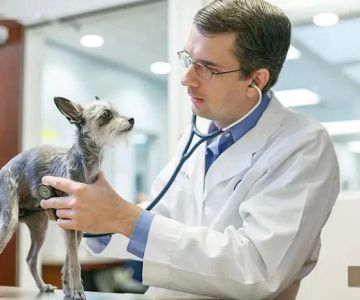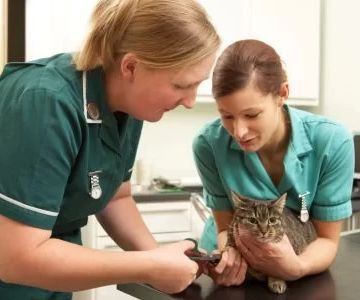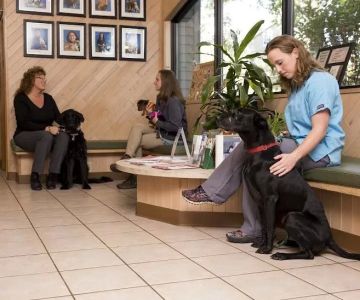- 1-Understanding the Roles in Veterinary Care
- 2-Veterinarian vs. Vet Tech: What’s the Difference?
- 3-Education and Training: How They Differ
- 4-Duties and Responsibilities of Vet Techs and Veterinarians
- 5-Career Paths and Job Advancement Opportunities
- 6-Why Understanding the Difference Matters
1. Understanding the Roles in Veterinary Care
In the world of veterinary care, there are two primary roles that many people get confused: veterinary technicians (vet techs) and veterinarians. While both play essential roles in ensuring the health and well-being of animals, the responsibilities, training, and career paths for these two professions differ significantly. If you've ever wondered whether a vet tech is the same as a veterinarian, you're not alone.
Veterinary technicians work alongside veterinarians to provide support in diagnosing, treating, and caring for animals. Veterinarians, on the other hand, are licensed medical professionals who are responsible for diagnosing and treating animals, performing surgeries, and making critical decisions regarding animal health. Despite the overlap in duties, each role has unique responsibilities and requires different levels of education and training.
2. Veterinarian vs. Vet Tech: What’s the Difference?
At first glance, it may seem like a veterinary technician and a veterinarian share similar responsibilities, but their roles are distinct. The most significant difference is their level of education and the type of work they do on a day-to-day basis.
Veterinarians: Veterinarians are medical professionals who have completed a doctoral program in veterinary medicine, which typically takes around eight years to complete, including undergraduate and medical school. After graduation, they are required to pass a licensing exam to practice legally. Veterinarians are the primary decision-makers when it comes to diagnosing illnesses, prescribing medications, and performing surgeries on animals. They are ultimately responsible for the treatment plan and outcome of the animal's care.
Veterinary Technicians (Vet Techs): Vet techs, on the other hand, are professionals who assist veterinarians in their work. They typically complete a two-year associate degree program in veterinary technology and are often required to pass a certification exam to become a licensed veterinary technician (LVT). While they cannot diagnose or perform surgeries independently, they play a critical role in patient care, assisting in routine exams, administering vaccines, drawing blood, and conducting laboratory tests.
3. Education and Training: How They Differ
The educational paths for veterinarians and veterinary technicians are quite different. Here's a breakdown of what it takes to become each:
- Veterinarians: Becoming a veterinarian requires extensive education, beginning with a bachelor's degree in a science-related field such as biology or animal science. Afterward, aspiring veterinarians must attend a veterinary school to complete a four-year program that culminates in earning a Doctor of Veterinary Medicine (DVM) degree. This is followed by licensing exams and ongoing continuing education throughout their careers.
- Veterinary Technicians: To become a veterinary technician, an individual must complete a two-year associate’s degree in veterinary technology from an accredited program. After graduation, they must pass a national or state certification exam (depending on the region) to become a licensed veterinary technician (LVT), veterinary nurse (VN), or registered veterinary technician (RVT). The training focuses on hands-on skills, such as medical imaging, lab work, and anesthesia administration.
While veterinarians have the final say in medical treatment and can perform surgeries, veterinary technicians provide valuable support by assisting with procedures, educating pet owners, and handling administrative tasks. Their training ensures that they are equipped to provide high-quality care to animals, though their scope of practice is limited compared to a veterinarian.
4. Duties and Responsibilities of Vet Techs and Veterinarians
The daily duties of veterinary technicians and veterinarians may overlap in some areas, but they each have specific responsibilities that reflect their training and level of authority.
Veterinarians: Veterinarians have the primary responsibility for diagnosing diseases, prescribing medications, performing surgeries, and making critical medical decisions for animals. They assess the overall health of pets and livestock, provide treatment for injuries or illnesses, and advise pet owners on proper care. Veterinarians also supervise veterinary technicians and other staff members to ensure that proper protocols are followed. They may also specialize in particular areas such as surgery, dentistry, or dermatology.
Veterinary Technicians: Veterinary technicians assist veterinarians with a variety of tasks, including conducting medical tests, administering medications, assisting with surgeries, and providing post-operative care. They may also monitor anesthesia during procedures, take x-rays, perform lab tests, and manage animal records. While they are not responsible for making diagnostic or treatment decisions, they are integral to the functioning of the veterinary practice, ensuring that animals receive the best care possible under the supervision of the veterinarian.
5. Career Paths and Job Advancement Opportunities
Both veterinarians and veterinary technicians have opportunities for career advancement, but their paths differ due to their education and experience levels. While veterinarians can pursue specializations or open their own practices, veterinary technicians can also expand their careers by pursuing specialized certifications, leadership roles, or teaching opportunities.
- Veterinarians: Veterinarians can specialize in areas such as internal medicine, surgery, dermatology, or dentistry. Many choose to run their own private practices, while others may work in research, teaching, or with animal shelters. Specialization often requires additional education and certification, but it opens up new job opportunities and higher earning potential.
- Veterinary Technicians: Veterinary technicians have the opportunity to specialize in areas such as anesthesia, dentistry, or emergency and critical care. Some technicians also move into management roles, supervising other staff members or running clinics. Continuing education and certification programs allow technicians to advance their skills and take on more responsibilities within their field.
6. Why Understanding the Difference Matters
Understanding the difference between a veterinarian and a veterinary technician is essential for pet owners to ensure that they are seeking the appropriate care for their pets. While veterinarians have the training and expertise to diagnose, treat, and perform surgeries, veterinary technicians play a crucial role in supporting these tasks and ensuring the well-being of animals in their care. Both roles are necessary for the success of veterinary practices and the overall health of animals.
If you’re unsure about the care your pet needs or want to learn more about how to manage their health, reaching out to professionals like those at Hidden Brook Veterinary can provide valuable insights and guidance. We offer a variety of services, including consultations, diagnostics, and treatment plans tailored to your pet’s specific needs. Whether you’re looking for general care or more specialized advice, our team is here to help!











